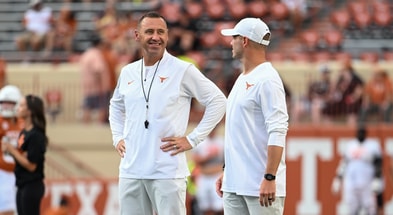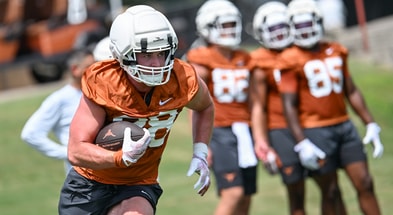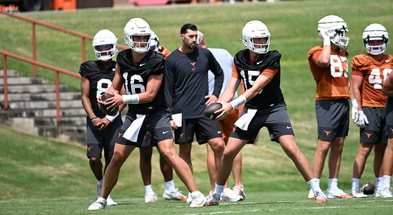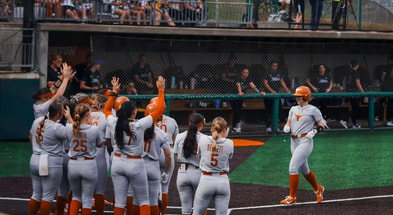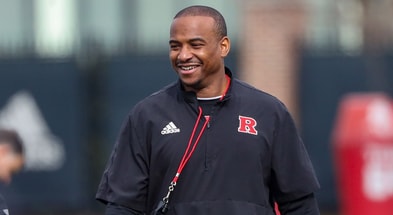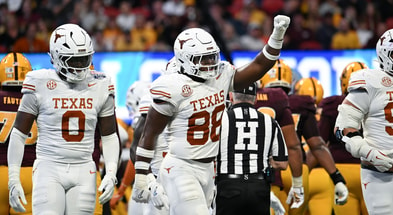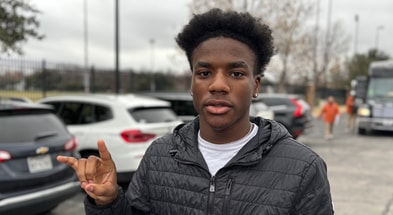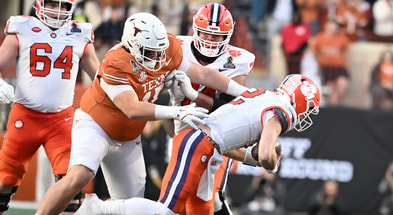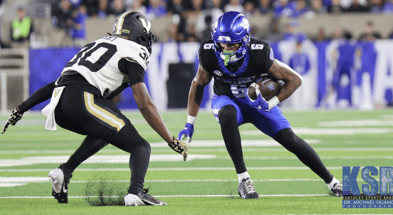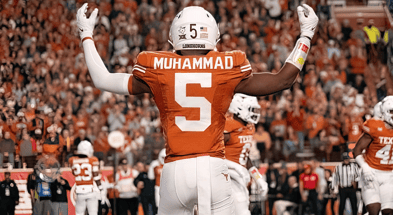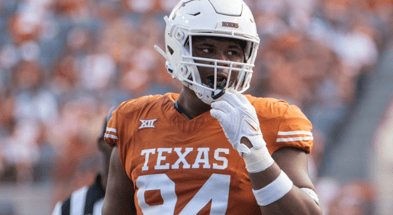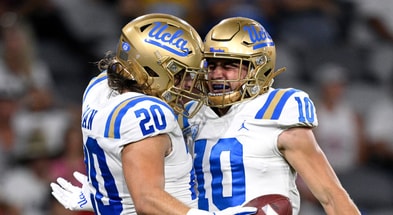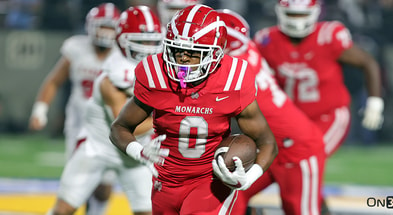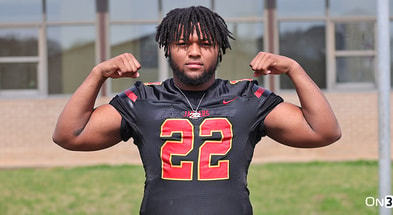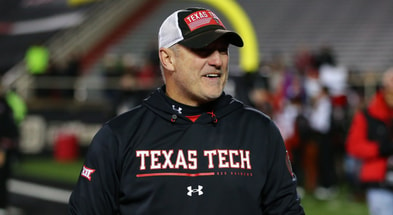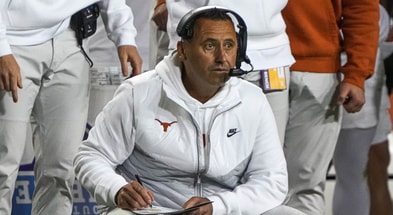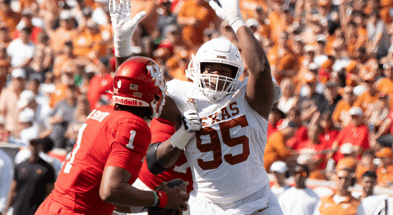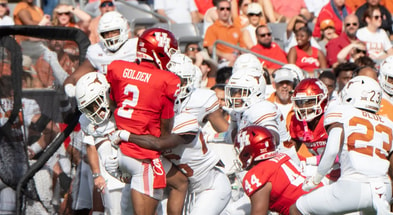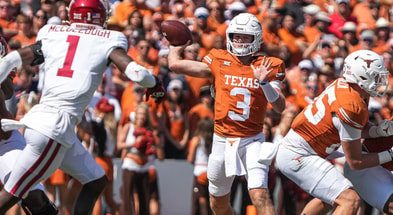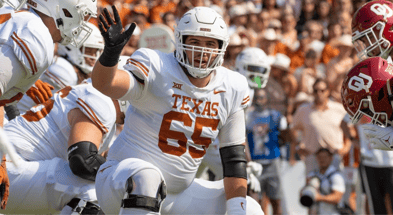Texas' new winning approach to building the secondary
The 2022 Texas Longhorns nearly made it to the Big 12 Championship Game largely thanks to a wildly improved secondary which wasn’t properly recognized for its quality. The All-Big 12 teams included zero Texas defensive backs, although four of the five starters earned “Honorable Mention.”
[Get FOUR MONTHS of Inside Texas Plus for $1!]
A strong testament to the quality of the secondary is the fact the team would have made the title game had the secondary not come apart due to injuries on the road in Stillwater.
If you look at the last few years in the Big 12 it’s pretty clear the top teams tend to stand out from one another by fielding skilled and veteran secondaries. Both TCU and Kansas State were loaded with great cornerbacks and veteran safeties. Texas quietly put together a terrific secondary in the offseason leading up to the 2022 season and had Gary Patterson help upload a new base quarters scheme for them to execute into Pete Kwiatkowski’s system which defined their defense.
Flat-footed safeties who line up 11 yards off the ball but can arrive to make a tackle before the runner has picked up even five yards are a game-changer in this league. It’s hard for Big 12 teams to find much space to get anything going in the run game or in easy range of the quarterback if the safeties can sit on everything underneath.
So Texas had a rewarding 2022 playing this scheme, how did it work and what are the key pieces to maintaining it for the future?
Texas’ triumph over Baylor and the Big 12
In my in-game notes during the Baylor game, as well as in a DM with SicEm365 analyst Travis Roeder, I questioned “why does everyone keep playing nub trips against Texas?” Baylor’s foray into the formation went pretty poorly for them and helps illustrate what made Texas tough in 2022.
The normal quarters scheme Texas ran would have the safeties ultimately responsible for vertical routes by the inside receiver to their side of the formation and the cornerbacks responsible for vertical routes from the outside receivers. So if there were two receivers to the field then the “Star” (nickel, Jahdae Barron) was an underneath player free to be a demon on the perimeter and the edge. Consequently, he had 11 tackles for loss and a sack in the regular season.
However if teams played with three receivers to one side, Texas’ adjustment was to play a coverage Patterson calls “special.”

“Special” coverage turns the Star into a de-facto cornerback. This could be trouble for TCU back in the day, as their Star (strong safety for them) was typically not a cornerback and didn’t have a corner’s hips or coverage skills, but Texas moved one of their most promising corners in Barron to man the position.
You can see Barron playing with some depth in the example above, because as a de-facto quarters cornerback he could end up defending a post route with no safety help. He navigated the task well and opponents couldn’t make much against Texas in this coverage.
The advantage of playing this as their main trips coverage was it kept them balanced to both sides of the field. Often teams facing a trips formation will rotate the safeties toward the field, leaving them potentially outmanned or out-leveraged in the boundary.
You couldn’t make Texas give up numbers in the boundary by loading receivers to the field, their ability to play their Star as a cornerback allowed them to keep the boundary safety on his own side of the field.
Jerrin Thompson’s eyes might wander to the field to help on crossing routes and posts, particularly when playing with Ryan Watts who was often in man coverage, but he could stay on the boundary hash to also help on routes in the boundary or to play the run. Thompson finished third on the team in tackles with 72 behind the two starting linebackers and broke up seven passes.
Top 10
- 1Breaking
Kansas State
Announces new head coach
- 2New
Penn State search
Focus on Matt Campbell
- 3Hot
Billy Napier
Lands new head coach job
- 4
Florida lands OC
Jon Sumrall scores big
- 5Trending
Game Picks
Championship Week best bets
Get the Daily On3 Newsletter in your inbox every morning
By clicking "Subscribe to Newsletter", I agree to On3's Privacy Notice, Terms, and use of my personal information described therein.
The key secondary trio
By playing with three cornerbacks on the field, Texas avoided the matchup problems normally associated with quarters. If you wanted to punish them for playing so much coverage skill on the field by getting physical? Good luck, both Barron and Watts were tough marks and could each tackle and blitz the edge to inflict negative plays. Teams kept playing nub trips against Texas despite the fact the Longhorns would stay balanced and leave 6-foot-3, 210 pound Watts on the boundary edge.
If you wanted to beat Texas it needed to be underneath against the linebacker or down the field against a cornerback.
Texas currently figures to return three of their five starters in the secondary in 2023.
- Ryan Watts, the boundary cornerback who much of the defense was built around.
- Jerrin Thompson, an increasingly experienced and physical boundary safety.
- Jahdae Barron, probably the best nickel (Star in Texas’ parlance) in the league and a part-time cornerback.
Between those three they have an awful lot of flexibility for next season.
Watts was the foundational piece at boundary cornerback. I guess with his size and versatility he could play another position if he wanted to in order to make a pitch to the NFL, but I’m not sure if he really wants that and I definitely don’t see why Texas would want to move him. They got endless mileage from planting him in the boundary. On one snap he could play press-man coverage which freed up Thompson to move around, the next he could come on a blitz.
Thompson is at his best at boundary safety but could perhaps also play free safety, a rangier position. He was good at reading plays and inserting himself in the run fit or on crossers from the wide side of the field.
Barron could probably play any of those positions or else field cornerback, where D’Shawn Jamison is moving on. His quality at Star would be hard to replace but he’d also be a very good cornerback.
The impact of returning these three is that Texas can probably afford to aim for top overall talent out of transfer portal and make it work. If they simply ran back the same plan as a year ago they’d need a new field cornerback to replace Jamison (where Terrance Brooks was playing late) and a new field safety to replace Anthony Cook. The more important spot would be field cornerback, a position which is routinely attacked in this scheme.
This system works best when you have man coverage corners in the field and boundary positions, man coverage ability at Star, and then heady players at safety who can take advantage of playing downhill on the hashmarks. The Longhorns have two guys who’ve shown some ability to offer heady, downhill play at safety in Thompson and Michael Taaffe. They need to add one or two more via transfer, development, or signing day. The bigger key will be maintaining a pipeline of physical corners who can play man coverage.
So long as they have plenty of those, this scheme should be very good to the Longhorns and help them lean on their natural proclivity toward fielding NFL-rich secondaries.
